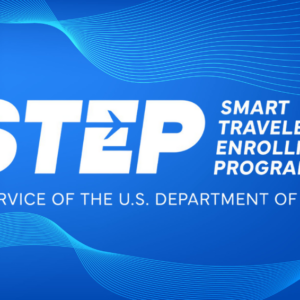Navigating through an airport for the first-time flyers can be a stressful and overwhelming experience. Whether you’re traveling alone or with others, it’s important to plan ahead of time to ensure the process goes as smoothly as possible.
From packing your luggage to making sure you arrive at the airport on time, we’ll cover everything you need to know to make your first flight a success.
We’ll also provide useful advice on how to prepare for security checks and other procedures at the airport. So if you’re a first-time flyer, read on and get ready for an unforgettable airport experience!
Top 10 Tips for a First-time Flyer
With the right tips, first-time flyers can make their airport experience as stress-free and enjoyable as possible. Here are some essential tips for first-time flyers to help you navigate the airport and board your flight with ease.
Check-In Online
Most airlines will let you check-in for your flight online 24 hours before departure. This will save you time at the airport and allow you to print out or have your boarding pass sent to your phone ahead of time.
If online check-in isn’t an option, be sure to know what you’re doing when you arrive at the airport to ensure you check in properly. Have your passport or other form of identification ready and prepared for the security checkpoint.
Be aware of what items are allowed in carry-on luggage and double-check that all prohibited items (such as sharp objects) are packed away in checked luggage. You’ll also want to have your boarding pass in hand when reaching the ticket counter, if you haven’t already checked in.
Plan Ahead
Check traffic conditions and plan your route accordingly. The last thing you want is to be stuck in traffic on the way to the airport. Be sure to give yourself plenty of time to get to the airport so that you can avoid any stressful situations.
It’s always a good rule of thumb to get to the airport early. Give yourself at least two hours before your scheduled flight time to make sure you have enough time to check in, go through security, and make it to your gate with plenty of time to spare.
If you need extra time for anything else related to your trip, like checking luggage or trying to get a better seat, make sure to add an extra hour or so just in case. That way you won’t be rushed and can make your flight without any stress.
Prepare Your Documentation Beforehand
Make sure you have all of your documents in order. This includes your passport, boarding pass, and any other required documents. Having everything organized and in one place will make going through security a breeze.
To make going through security easier, wear shoes that are easy to slip off and on. Pack any liquids in a separate bag so that it’s easy to pull out if needed. And be sure to have your boarding pass and identification handy when you approach the security checkpoint.
It’s also wise to put laptops and other electronics into their own separate bin so that they can be quickly and easily scanned. Taking these steps will make the process of going through security much easier and smoother, and the more you travel, the more second nature they will become.
Know What You Can and Cannot Pack with You
It’s important to know what you are allowed to pack in your carry-on bag. Be sure to research the TSA’s website for a list of prohibited items such as sharp objects, cigarette lighters, and aerosol cans. It’s also beneficial to be aware of any country-specific rules that may affect what you can and cannot pack.
Additionally, make sure to read the restrictions on any items that you intend to check as they may not be allowed on certain airlines or in certain countries. Knowing what is considered an acceptable item for both carry-on and checked luggage will help minimize delays at the airport. Taking a few minutes ahead of time to double check what you can and cannot bring with you can save a lot of hassle in the long run.
Carry-on bags are those that are small enough to fit in the overhead bin or under the seat of the airplane, and typically do not exceed a certain size limit. Checked bags must be checked at the ticket counter and usually have a higher weight limit than carry-ons.
In general, carry-ons should only include necessary items for the duration of the flight, such as items needed for personal comfort or medications, while checked bags should include anything that would not fit into a carry-on. Additionally, items such as firearms and certain liquids must be checked at the ticket counter and will not be allowed in carry-on luggage.
Know the Airport
Familiarize yourself with the airport layout before your trip. This way, you’ll know where everything is and won’t have to waste time wandering around looking for gates, places to sit, or places to eat. You can refer to online maps or concourse maps on-site. Feel free to take photos of maps as well, to take with you as you navigate the airport.
In addition to knowing where to go in an airport, be sure to plan what you’re going to do during your layover ahead of time, if you have one. This way, you can make the most of your time and won’t have to wander around aimlessly looking for things to do.
Passing the time in an airport doesn’t have to be boring. There are plenty of ways to keep yourself occupied while waiting for your flight. Consider bringing a book or magazine, playing games on your phone or tablet, listening to music, shopping at the airport stores, or grabbing a bite to eat.
You can also use this time to plan your upcoming trip, arrange airport shuttle services as needed, or document the trip with photos and videos. Taking a walk around the airport can also be a great way to pass the time, stretch, and get some exercise at the same time. No matter what you choose to do, there are plenty of ways to make your airport wait fun and productive.
Dress Comfortably
Dress comfortably and wear easy-to-remove shoes. You’ll thank yourself later when you’re going through security and don’t have to fumble with complicated clothing or shoes.
When it comes to what to wear while traveling, comfort should always be at the forefront of your mind. Opt for clothing that is lightweight and breathable like cotton or linen.
You should also avoid wearing items with metal embellishments as these can set off the airport scanner and require extra screening. Avoid wearing clothing that has too many pockets or layers as these can also hold up the security process.
Finally, opt for shoes that are easy to slip on and off, such as a pair of sandals or slip-on sneakers. Not only will this make the security check easier but it will also ensure your feet are comfortable during a long flight. When traveling, it is best to leave any valuables or jewelry at home. This will help you to avoid any unnecessary theft or lost items in the airport.
Use a Rolling Suitcase, If You Have One
Using a rolling suitcase is an easy and convenient way to get your luggage around the airport. It will help to limit the amount of time carrying heavy bags and make navigating through the airport a breeze. You can pick up a reasonably priced rolling suitcase at any local department or travel store. Be sure to look for one with good quality wheels that will last through the journey.
Look for a suitcase with plenty of pockets and compartments to keep your items organized, as well as handles that are comfortable to grip while pulling it along. A sturdy and reliable rolling suitcase will make going through an airport much easier, especially if you have multiple pieces of luggage or bags to carry.
Pack a Snack and Something to Drink
Airports can be noisy, crowded, and uncomfortable places to wait. To help pass the time while waiting for your flight, it’s a good idea to bring some snacks and drinks from home so you don’t have to buy anything in the airport.
Bring along energy bars, granola, squeeze applesauce, or other snacks that are easy to eat on the go and don’t require refrigeration or preparation. Pack a refillable water bottle so you can stay hydrated while navigating through the airport and during your flight. This will not only help you save money, but it will also make your experience more comfortable.
Additionally, having some snacks with you can come in handy if flights are delayed or the options available in the airport are limited. By bringing food and drinks from home, you can ensure that you stay full and energized during your travels.
If you forgot to pack a snack for your airport experience, fear not! Most airports have a variety of restaurants and cafes that offer delicious food options. There are usually plenty of fast-food restaurants available for those looking for something quick and convenient.
For healthier options, many airports have cafes or grab-and-go restaurants that serve salads, sandwiches, and other healthy snacks. For those looking for something a little more special, some airports offer sit-down restaurants and bars serving full meals. Whatever you’re craving, chances are there is an eatery at the airport to satisfy it and fuel you for your journey.
Comply with All Airport Rules
It is important to comply with all airport rules and regulations. This means following the instructions of the airline staff, security personnel, and other airport officials. Be aware of the signs posted around the airport and follow them accordingly.
Pay attention to announcements that may provide helpful information about security or other relevant information. Make sure to remain courteous at all times and practice good airport etiquette, as others may be affected by your actions. Following the rules will help to ensure a stress-free and pleasant experience for all passengers.
In the case of an emergency at an airport, it is important to remain calm and follow instructions given by airport personnel. First, listen carefully for announcements over the loudspeaker and pay attention to signs on walls or floors indicating evacuation routes.
Before evacuating the area, secure any personal belongings and make sure all members of your party are accounted for. During the evacuation, stay in line and remain quiet so that instructions can be heard by all. If assistance is needed, airport personnel will be available to help. Once outside of the building, follow any additional instructions given by emergency responders on scene or local law enforcement.
Prepare for Jet Lag, If Applicable
Jet lag is a common side effect of long-distance air travel and can often cause fatigue, insomnia, headache, and other symptoms. To avoid jet lag, try to adjust your sleep schedule in advance of your trip by going to bed earlier or later than usual depending on the time difference between your departure and arrival cities.
Additionally, allowing yourself plenty of rest on the day of your flight and avoiding alcohol will help to minimize jet lag symptoms. Drink plenty of water during the flight and make sure to get up and move around whenever possible. Taking melatonin or other supplements can also be helpful for adjusting to different time zones. With a bit of preparation, you can avoid jet lag so that you can enjoy your trip, rather than struggle through it.
Enjoy Your Vacation!
When all is said and done, try to enjoy your first trip as much as possible. The airport experience may be a bit overwhelming for first-time flyers, but it will soon become second nature after some practice. Just remember to plan ahead and be prepared. Have your documents ready, check the traffic conditions, and know what you can and cannot bring with you. A little bit of preparation will go a long way.
Overall, navigating through an airport for the first-time flyers can be a bit overwhelming. However, with a little bit of planning and preparation you can make your first airport experience easier.
Be sure to check-in online ahead of time, plan your route according to traffic conditions, bring all required documents, know what items are allowed in carry-on luggage, dress comfortably, and make the most of your layover with activities. With these tips in mind, you’ll be well on your way to having a successful and stress-free airport experience. Enjoy your trip!






